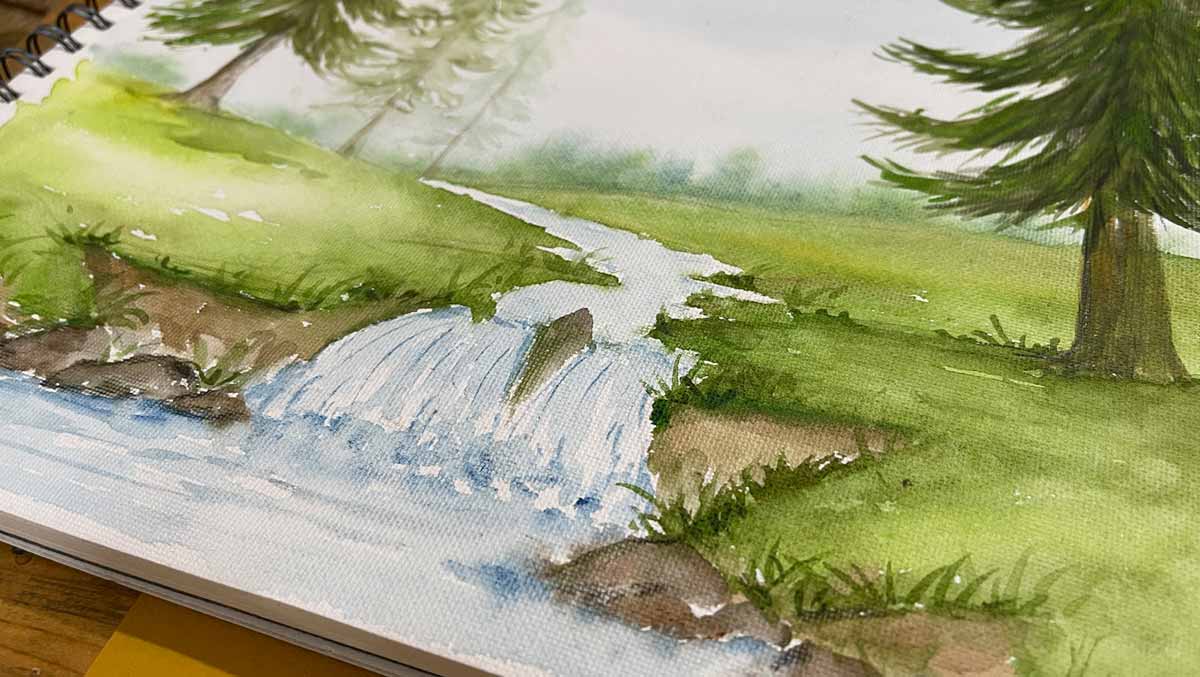Painting and art is an essential part of our lives for centuries, there are various forms of painting and toolkit plays a major role, so let’s discuss all the essentials for the toolkit for watercolour painting.
As when you are getting started with watercolour painting, you should know what all supplies or toolkit for watercolour painting would be needed.
And the best news over here is, you don’t need many supplies to get started with watercolour painting.
And hence, a toolkit for watercolour painting is quite cost-effective and affordable. But you should take care of a few things! You should know a bit about sketching and drawing as it would help give you an idea and perspective of what you need to paint.
And sketching would help you turn out your painting more beautiful. And it would even enhance your painting. As you would have drafted your idea on the sheet or paper and then you would know which colour or mixture of colour would suit more.
Now, as a beginner, you would like to know everything that would be needed in a toolkit of watercolour painting and how to go ahead with it. So, let’s start!
Essentials needed for the toolkit for watercolour painting:
To get started with watercolour painting, you need a few essentials, which is a toolkit for watercolour painting. Here are those listed below:
- Paints: When we are talking about, watercolour paints, it comes in two forms: tubes and pans.
Pans are like hard cakes of paint used in watercolour painting, that when used needs to be moistened with water and tubes are the ones that already come in moist and pasty consistency.
And when you are a beginner and don’t know which one to buy, you can go ahead with trying the beginner sets of both and see with which you are most comfortable. And hence, an essential part of the toolkit for watercolour painting.
- Paintbrushes: When you are going to buy, watercolour brushes, three major things should be considered: hair, size and shape.
Natural hair paintbrushes are usually more preferred and the best choice for watercolour painting, and you can also go for synthetic if you have a tight budget as they also work well with watercolours. But it would need to be replaced every few years, depending on how often they are used.
Watercolour brushes come in various sizes, which can range from super-tiny brushes to large ones. But you don’t need all, a medium or large round brush would just be enough to paint or create large washes of colour and even create fine details.
And round brushes are the most preferable brushes for watercolour painting and they should be a must in your toolkit for watercolour painting as you can use the round brush for detailing and washes.
And even you can change the width of lines by varying your angle and pressure.
- Watercolour paper: When we are talking about watercolour paper. It usually comes in three types, sheets, pads or blocks.
Artist quality watercolour sheets can be cut to size and purchased in individual sheets.
Watercolour pads are usually connected at one edge by a wire binding. It contains 10-20 sheets and is usually smaller in size. When travelling, pads are the best as they are quite handy for practice.
Watercolour blocks are the ones that are a pile of watercolour papers, that are usually glued together at one edge. And when you start your painting, you can paint on the top of the sheet and when done and dried, you can remove it with a knife gently from the glued binding.
- Palettes: The watercolour palettes that are used are either ceramic or plastic. The palettes which are of ceramic are of better quality than plastic palettes eventually would become stained with paint after some time of use.
But they are much lighter and easier to hold. And when you are choosing a palette, choose the one which has several wells in it. So that you can mix your colours perfectly.
- Container of water: Water plays an essential role in the toolkit for watercolour painting. And don’t forget to change your water when it becomes murky.
Some artist even uses two containers of water: the one for dipping (full of clean water) and the other one for rinsing the paintbrush in between different colours.
Points to take care of when storing your toolkit for watercolour painting:
- Never store your watercolour brushes after being cleaned upright, as the water after cleaning would enter into the ferrule and after some time would lead to loosening of hairs.
- Palettes should be covered when not in use. And if your palette has a lid it would be much more beneficial as it would prevent dust to rest on paint.
- Care should be taken that the caps of tubes of your paint should be properly screwed and make it pain-free.
So, now you know what all essentials are needed in the toolkit for watercolour painting and how to store them. To understand more about the watercolour painting you should give a read to “Watercolour Book by Milind Mulik”.
And for buying amazing art products you can go and visit our site “RangDe.studio”.
And Pencil and Chai Fine Arts Gurukul offer you all the amazing courses where you can learn all about watercolour painting from professional teachers. What are you waiting for? Enrol yourself now!








